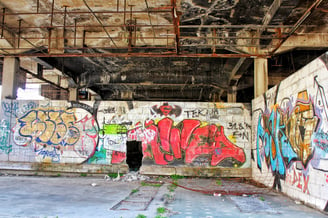Sign UP TO OUr NEWSLETTER
The Razvitak Department Store
Location: Mostar, Bosnia and Herzegovina
Built: 1970s
Abandoned: 1990's (heavily damaged during the Bosnian war)
Purpose: Department store with 3,200 m² of retail space and 64 residential apartments above; served as a major commercial and social hub
Current status: Being demolished (as of 2025); a new mixed-use complex is under development, with plans to include retail, housing, offices, and underground parking
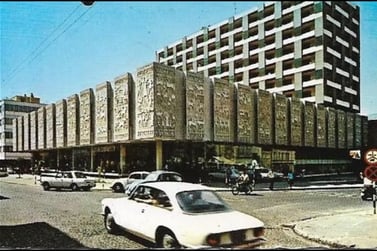

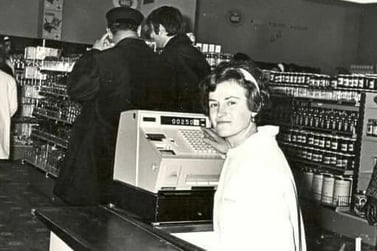

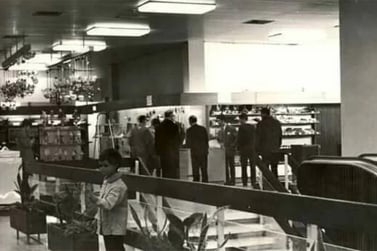

A gallery of photographs where posted on the Instagram Page Mostar History, showing the opening of the Department store on March 1st 1970.
Photos are part of the HR‑DADU‑SCMT‑510 Razvitak collection from the State Archives in Dubrovnik, taken by Ivica Grubišić
Walk down Braće Brkića Street in Mostar, and you’ll come face to face with a towering concrete giant—weathered, imposing, and eerily still. This is the Razvitak Department Store, or what remains of it. Once a proud symbol of modernity, today it feels more like a set piece from a dystopian film.
When it opened in 1970, Razvitak wasn’t just another shopping centre—it was the place to be. With over 3,200 square meters of retail space, it offered everything from everyday essentials to textiles, cosmetics, appliances, footwear, and even car parts. For many, it represented the pulse of urban life in Yugoslavia: bold, busy, and full of promise.
Now, stripped of its original purpose and left to decay, Razvitak stands as a stark reminder of a different era—one filled with ambition, upheaval, and unfulfilled futures.
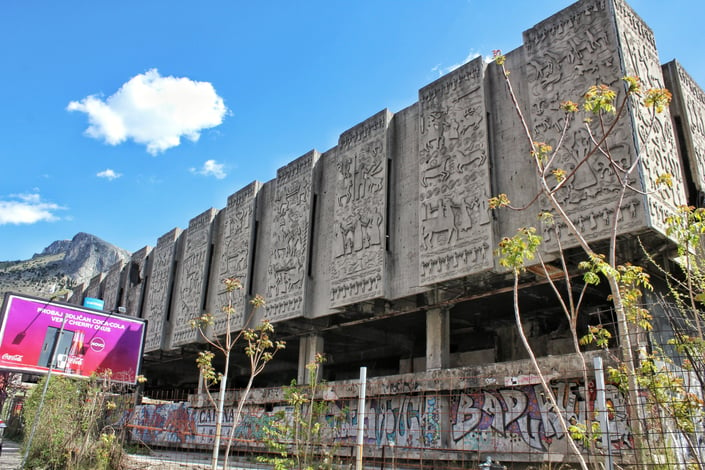

Designed by renowned Bosnian architect Ante Paljaga, the Razvitak department store in Mostar stood out not only for its bold modernist form but also for its deeply symbolic facade. The building’s exterior was adorned with a series of striking precast concrete panels, each featuring motifs inspired by stećci—medieval tombstones unique to the Balkans and inscribed with abstract, spiritual, and folkloric symbols.
These stećci are more than just decorative references; they’re deeply woven into the cultural and historical fabric of Bosnia and Herzegovina. By incorporating their imagery into the building’s skin, Paljaga achieved more than visual flair—he created a powerful architectural statement that bridged modernism with local tradition. This fusion of brutalist geometry and indigenous symbolism became a defining feature of the Yugoslav architectural identity, giving the building a strong sense of place within the wider landscape of socialist-era design.
The result was a modernist structure that didn’t reject history, but rather reinterpreted it, embedding cultural memory into everyday urban life.
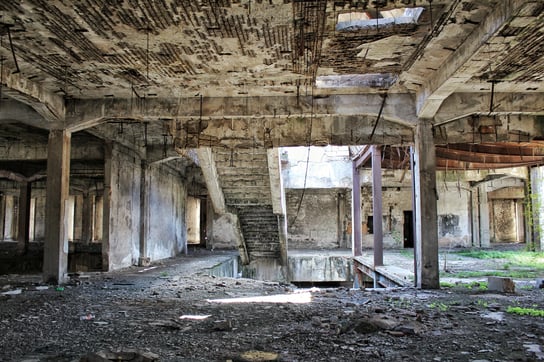

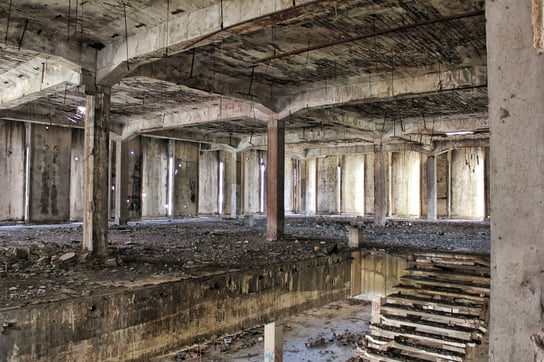

Heavily damaged during the Bosnian War, the Razvitak Shopping Center and its neighboring residential tower were shelled and bombed in the 1990s. The high-rise was later demolished due to structural instability, but the shopping center was left abandoned and in ruins.
Today, over 20 years later, the site remains fenced off and off-limits, with its future still unresolved. While some proposals call for redevelopment or preservation of the original façade, progress has been blocked by ongoing legal disputes between the City of Mostar and former residents.
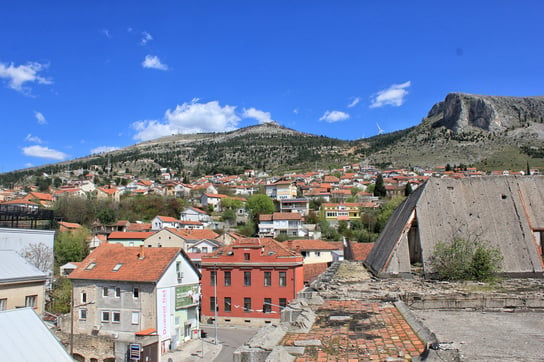

Again, I probably shouldn't advise this, buuuuut if you're feeling particularly daring, there is a gap in the gate and small entrance through a hole in the wall you can enter through at the front of the building and have a little explore inside. 😉

